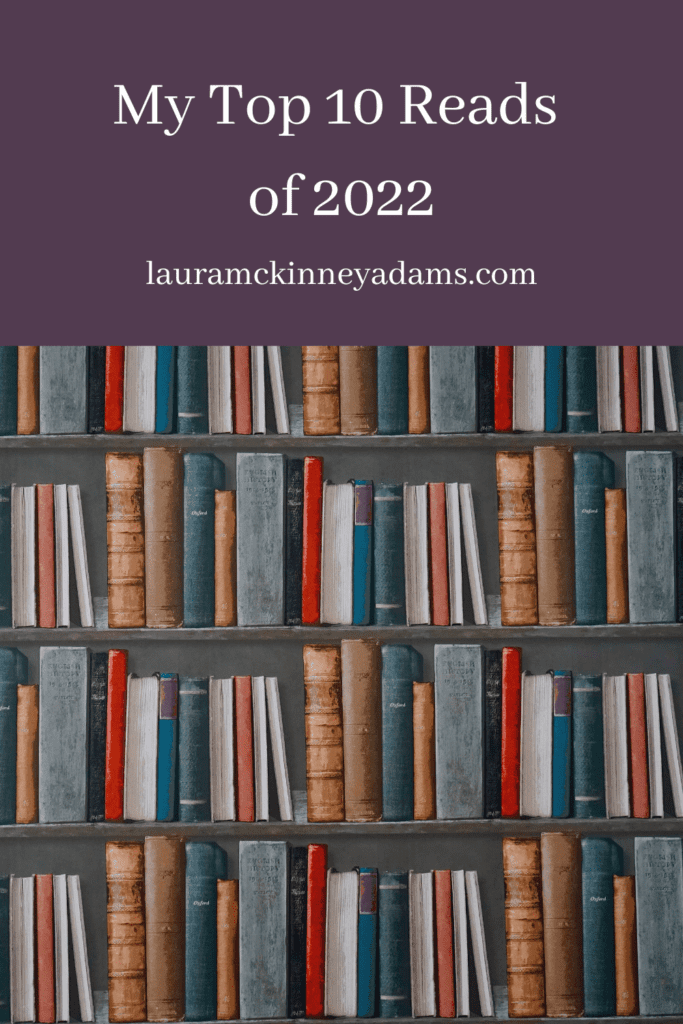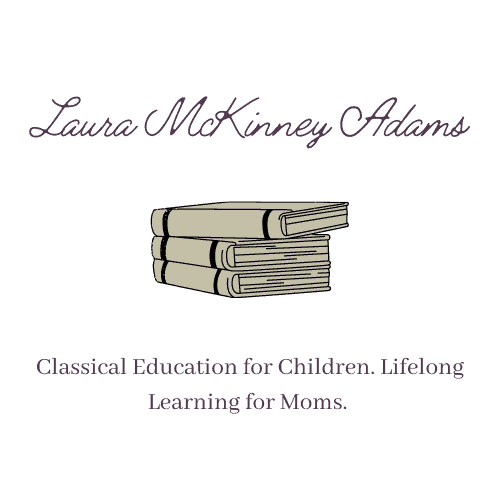This post contains affiliate links, which means I might make a small commission if you make a purchase. This does not affect your cost. Thank you!

For the most part, 2022 was a year in which I gravitated to books that made me think. Accordingly, a lot of these books have deep (or even dark) themes. In other years, there have been more escapist selections.
I hope to make these top ten lists an annual part of my blog. I grouped my list roughly by theme.
My favorite book of the year was Culture Care by Makoto Fujimura. Fujimura is a Christian and an artist and discusses the intersection of the two. If you are artistic in any way, this is the book for you.
“I am not a Christian artist. I am a Christian, yes, and an artist. I dare not treat the powerful presence of Christ in my life as an adjective. I want Christ to be my whole being.” – Makoto Fujimura
“If hope has not first been silenced before the profundity of evil and loss, then such a two-dimensional offering is more scandalous than fruitful. Realistic is not so much concerned with practicality as it is about truthfulness.” – Makoto Fujimura
2. Balzac and the Little Chinese Seamstress by Dai Sijie
As I collected this list, I noticed certain themes recurring in the books that stuck with me this year. One is how the ideals of freedom inspire those living under tyrannical governments. The first in this genre was Balzac and the Little Chinese Seamstress by Dai Sijie.
I chose to read this book because it’s on the Rory Gilmore Reading Challenge list, which I have chipped away at with varying levels of success since 2016. And I also chose it because I happened upon an inexpensive copy in a local used bookstore.
It is horrifying and beautiful in the best way. Major content warnings though, this is not a book to hand over to a teen or to a sensitive adult. Life under communism was horrible. It’s a semi-autobiographical story and the author does not sugarcoat the horror at all.
The book is set during the Cultural Revolution in China. Books from the Western canon are banned. Yet the main characters find copies and read them anyway, and find themselves inspired by the ideas of freedom and equality.
“Right now, ignorance is in fashion, but one day the need for good doctors will be recognized once more.” – Dai Sijie
“But Jean-Christophe, with his fierce individualism utterly untainted by malice, was a salutary revelation. Without him I would never have understood the splendor of taking free and independent action as an individual. Up until this stolen encounter with Romain Rolland’s hero, my poor educated and re-educated brains had been incapable of grasping the notion of one man standing up against the whole world. The flirtation turned into a grand passion. Even the excessively emphatic style occasionally indulged in by the author did not detract from the beauty of this astonishing work of art. I was carried away, swept along by the might stream of words pouring from the hundreds of pages. To me it was the ultimate book: once you had read it, neither your own life, nor the world you lived in would ever look the same.” – Dai Sijie
3. Reading Lolita in Tehran by Azar Nafisi
In a similar vein to Balzac and the Little Chinese Seamstress, this story is about people who live under an oppressive government in Iran finding comfort in books from the Western canon. The author is a professor who taught female students about Western literature. As you can imagine, she eventually leaves the country and moves to the United States.
“An absurd fictionality ruled our lives. We tried to live in the open spaces, in the chinks created between that room, which had become our protective cocoon, and the censor’s world of witches and goblins outside. Which of these two worlds was more real, and to which did we really belong? We no longer knew the answers. Perhaps one way of finding out the truth was to do what we did: to try to imaginatively articulate these two worlds and, through that process, give shape to our own vision and identity.” – Azar Nafisi
4. A Place to Hang the Moon by Kate Albus
The beginning of this story reminded me of the Pevensie children’s escape from London. A set of three siblings departs London for the English countryside in order to stay safe during World War II. Even before their departure, they do not have a loving guardian. They deeply desire to find someone who loves them enough to believe that they hung the moon. I liked the depiction of strong sibling relationships and how they banded together in the face of adversity.
Unlike the previous two books on my list, this one would be perfectly appropriate for older children or teenagers. I plan to use it as a read aloud when we study modern history in 4th grade.
5. A Time to Build by Yuval Levin
We are living in an anti-institutional age. In part, this is because we have seen the cracks in so many of our institutions in the last few years. However, this decline goes back for decades. Yuval Levin argues that we shouldn’t give up on institutions altogether. Rather, we should each use our influence to improve institutions. Strong families build strong nations.
“The family, because it unavoidably constrains personal choice and expressive individualism, has been turned into yet another arena for controversy in our multifront political and cultural struggle.” – Yuval Levin
Every so often, I impulse purchase a Kindle book because it costs $1.99. Wintering was the result of one of those impulses, but it was worth far more than what I paid.
I admittedly have a type A personality. Those of us who are this way do not tend to rest well. Yet rest is a crucial part of the ebbs and flows of life. Most of the book deals with winter in a metaphorical sense – winter as a time of recovery, a time of hardship, or a time of loss. May suggests that we need to take the time to process and recoup from major losses, and that there are no shortcuts.
7. North and South by Elizabeth Gaskell
I knew nothing about this book before I started it. I bought it because the Kindle edition was inexpensive. It is not, as Americans might assume at first glance, about the Civil War. Rather, it’s about the Industrial Revolution and how it affected life in England. The North in the title refers to a mill town in the northern part of England, and the South refers to the rural countryside in the southern part. If you like Jane Austen, you’ll probably enjoy Elizabeth Gaskell as well. Her writing is excellent.
8. Charlotte Fairlie by D.E. Stevenson
D.E. Stevenson was a distant cousin of Robert Louis Stevenson. I discovered her through the recommendation of a fellow second-generation homeschooler. Charlotte Fairlie is honestly a bit predictable, but it was a good light summer read.
9. American Shoes by Garrett and Rosemarie Turke
American Shoes is a refugee story set in World War II. It is based on Rosemarie’s real experiences, told artfully with help from her son. I picked it up on a whim at the library one day. There are many World War II stories out there, but this one is really well done. The fact that Garrett has a personal connection to the story line shows in his care and deftness in its retelling. Through a series of events, Rosemarie is left to return to the United States on her own, and demonstrates immense grit in the face of adversity. Her story is heartbreaking and important.
10. So Many Beginnings by Bethany C. Morrow
I read a few “remixes” of classics this year, and most of them were utter sacrilege, but this one was actually good. This version of the March sisters includes a teacher, a writer, a seamstress, and a dancer. Despite the fact that I’ve lived in North Carolina for most of my life, I did not know about the Freedmen’s Colony on Roanoke Island. I traveled to the Outer Banks this year and saw a small monument about it. After the Union captured Roanoke Island, it became a place for the formerly enslaved to rebuild their lives. The So Many Beginnings characters were well developed and the plot was charming. I think it worked because the author kept the original’s time period, but didn’t box herself into an exact replica of Little Women‘s plot line.

Leave a Reply